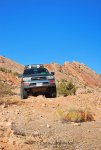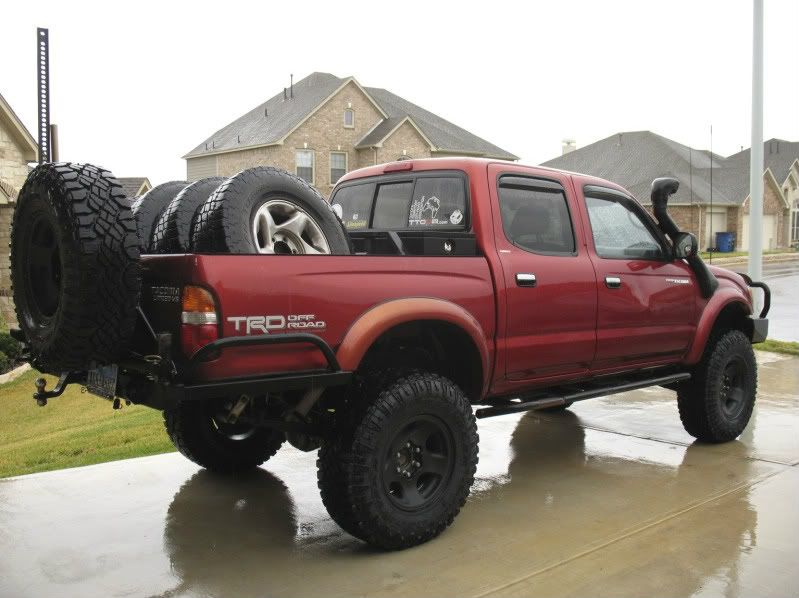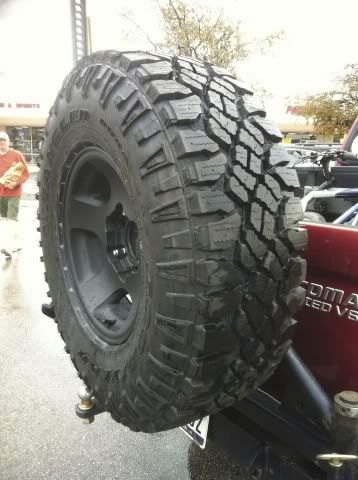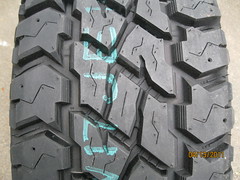Thanks for the sage advice James. When you say "drifts right" do you mean pulls right? I just had an alignment and now the truck will change lanes to the right on the freeway if I let it... not bad but just enough drift to annoy me. I wonder if new, balanced tires will correct this or does it need to go back to the alignment shop?
Some/much of this is in one of the other tire threads, but so I/you don't have to go digging for it...
Yes, I do mean pulls right, just said 'drift' because people have different opinions about what constitutes a pull vs. a drift. To me it's mostly the same, if I can't release the steering wheel for several seconds on good road then it's pulling/drifting and needs fixing. In the case of of S/T Maxx, depending on the crown of the road, the truck will be leaving my lane in about 4-5 seconds.
Why did you get an alignment?
Routine maintenance or because of drivability? Most people won't pay for an alignment unless the car is pulling badly. But it's a good idea after new tires to make sure settings are correct and the new tires will not wear prematurely
and/or to change the settings to meet the needs of the new treads.
I don't think new tires will fix your pull if it started immediately after the alignment. There are a range of settings that are acceptable, something was changed that doesn't agree with your current set-up, most likely caster, but camber can change how it drives too. If the tires were rotated at the same time, you need to eliminate worn tires as the cause of the pull.
You need to know
The before and after settings of the current alignment. Hopefully they gave you a printout, if not, start going somewhere that will. If you are picky about how well your truck drives (as am I) then you may need to find a shop with a good tech that understands the changes you have made, will listen to you, and adjust for your set-up and how you want it to drive. Some places will just tell you it's within spec, won't test drive it, and don't care. If the settings before were within spec and you didn't have alignment induced tire wear, and it drove well, you want to go back to those settings for the same tires.
Caster angle is generally what changes the pull/drift the most, and for the typical crown of the road, up to 1/2-degree of cross-caster is common. For example: 2.0-degrees positive caster on the left with 2.5-degrees on the right. This steers the car to the left, helping counteract road crown and/or tire pulling.
Tires/tread matter
Some will need more cross-caster, some less. Maxxis Bighorn 255/85 worked great with 1/2-degree cross-caster. Then with Cepek FCII 285s on the 4Runner I needed +0.9*, and even a little more was better (spec is for a maximum of +0.75*, your truck is probably similar). I ran it like this for a couple years on FCII, worked great. Recently pulled the FCII and put ******** Cepek Mud Country on. Same car, same wheels, same 285/75R16 size, but with higher-void tires... car drifted left with the +0.9* cross-caster, and needed to go back to only +0.5*, drives straight again.
Even with extreme cross-caster on my 4Runner, I can't get the car not to pull to the right with Toyos, so I can't/won't run them.
The Tundra has 17" 285 FCII, +0.9* wasn't enough, changed it recently to +1.2* cross-caster, drives straight/nice. Though even with this HIGH cross-caster is still goes right with the S/T Maxx.






